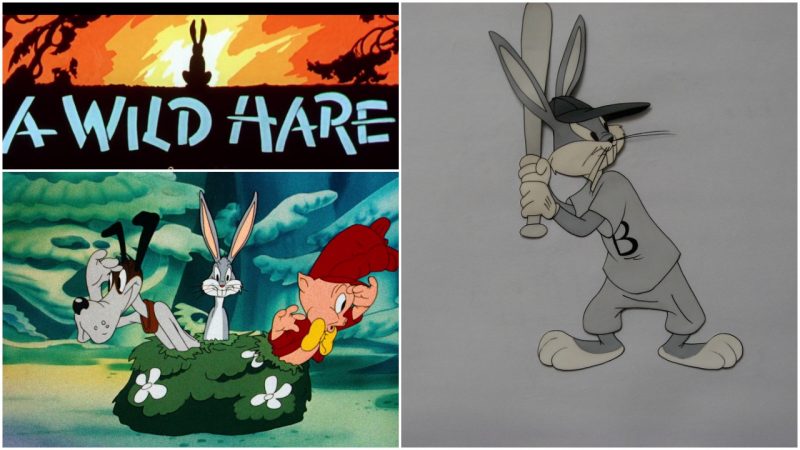Bugs Bunny is deeply embedded in many a childhood memory. One of the oldest of the Looney Tunes characters, Bugs’ beginnings can be traced to 1940, when, in a cartoon directed by Tex Avery, A Wild Hare, he was introduced together with his archenemy, Elmer Fudd.
In this Warner Bros. cartoon, which was originally released on July 27, 1940, Bugs appears as an unnamed character. He was named in the second cartoon with the same characters as Elmer’s Pet Rabbit. The name of the cartoon itself is a word play on the phrase “wild hair,” using hare instead, the sort of joke that appears in many of the Bugs Bunny cartoons.
To make things more “punny,” the opening credits of the cartoon are accompanied by the song “I’m Just Wild About Harry.” This is not the first Warner Bros. cartoon about a rabbit and a hunter–the theme was introduced in 1938–but this was the first to become popular.
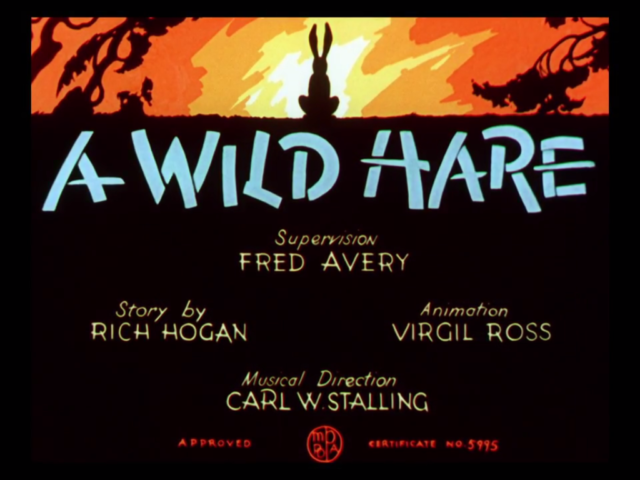
A Wild Hare begins with a classic Bugs Bunny set up: Elmer the hunter draws near to Bugs’ hole and places a carrot just outside. He then hides behind a tree and, soon after, we see Bugs’ hand reaching for the carrot. When he gropes for it again, he finds the end of Elmer’s shotgun instead of a carrot. Elmer places the shotgun inside the hole, and after a short struggle he pulls his bent shotgun out. Now angry, Elmer starts digging in Bugs’ hole, but Bugs appears from behind him, chewing a carrot and saying, “What’s up, Doc?” This phrase would become Bugs’ trademark.
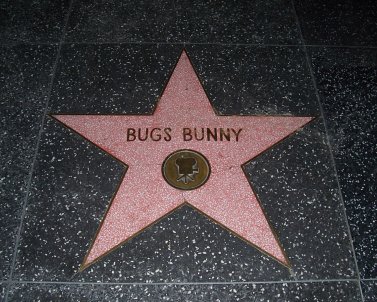
Elmer replies to Bugs’ question by saying he’s “hunting ‘wabbits’,” another phrase that became definitive, with Elmer saying it in every cartoon where he appears. Bugs acts naive, chews his carrot, and asks Elmer what a “wabbit” is. He then teases Elmer on every aspect of his description until Elmer finally begins to suspect that Bugs is a rabbit. Bugs admits it and escapes, leaving Elmer furious. The cartoon continues showing a wild game of hunter and prey in which Bugs gets up to all kinds of mischief, playing tricks on poor Elmer. In the end, a sad Elmer retreats without his prey, while Bugs, the winner in this match, plays his carrot as a flute to the melody of “The Girl I Left Behind Me.”
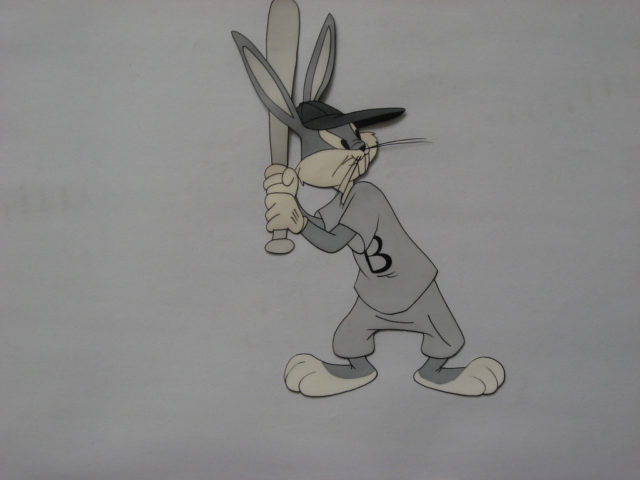
A Wild Hare was directed by Tex Avery, an animator, and cartoonist who created films for Warner Bros. and Metro-Goldwyn Mayer. He created not only Bugs Bunny but also Daffy Duck, Droopy, and Screwy Squirrel, and he developed Porky Pig.
Considered the first official Bugs Bunny cartoon, A Wild Hare paved the way for the future of the characters introduced. We can hear the original voice of Elmer Fudd, which was used in every other cartoon in which he appears. Also, Elmer’s appearance in this animation was the one that was taken as the basis for subsequent cartoons. It is the same with Bugs Bunny’s appearance: although he can be seen in many versions, his general appearance, his manner of speech, voice, and personality, followed this initial cartoon.
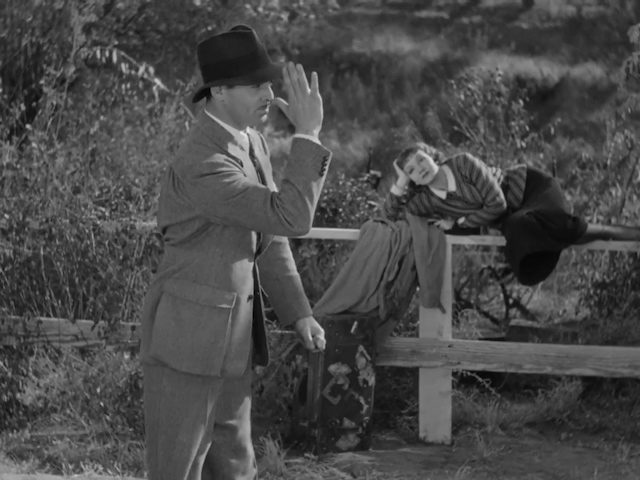
Bugs is frequently shown as a nonchalant character, eating his carrots with not a single worry. Animator Chuck Jones, who directed Bugs Bunny cartoons as well, explains that Bugs’ posture was inspired by Clark Gable in the 1934 movie It Happened One Night. In one scene, Gable’s character is shown eating carrots very fast while giving instructions at the same time. The movie and this particular scene were part of the popular culture of that time, and people immediately connected Bugs with Gable’s role.
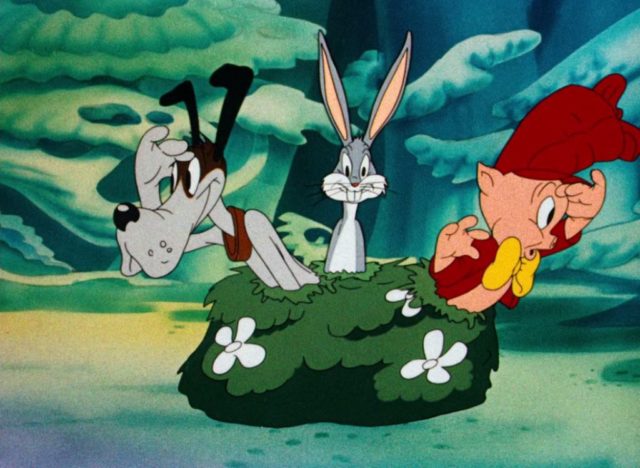
As for the line, “What’s up, Doc?”, Tex Avery (who added it to the script) explained that it was a phrase often used in Texas, his home state. Avery didn’t realize that the phrase would gain so much popularity, but people really took to it.
Read another story from us: Sweden’s odd tradition of watching Donald Duck cartoons on Christmas Eve
A Wild Hare was nominated for an Academy Award in the category of Best Short Subject: Cartoons, but it sadly lost to The Milky Way. Nevertheless, we have to thank Tex Avery and his team for introducing us to the amazing Bugs Bunny, a character that always brought a smile to children’s faces.
